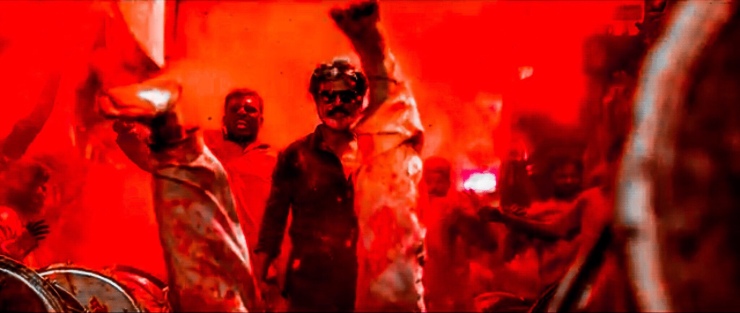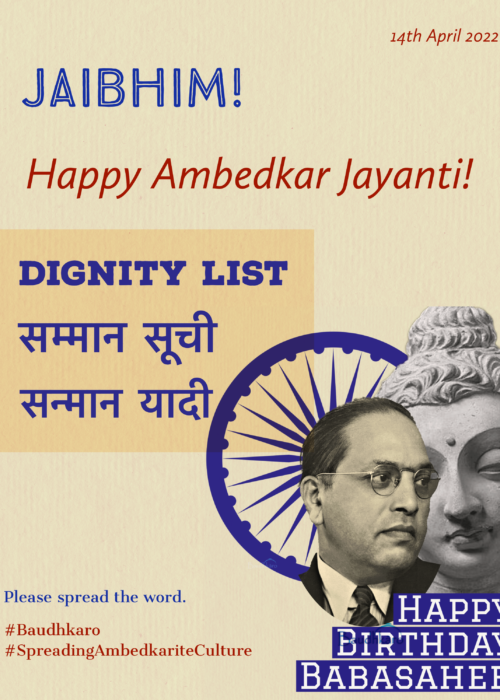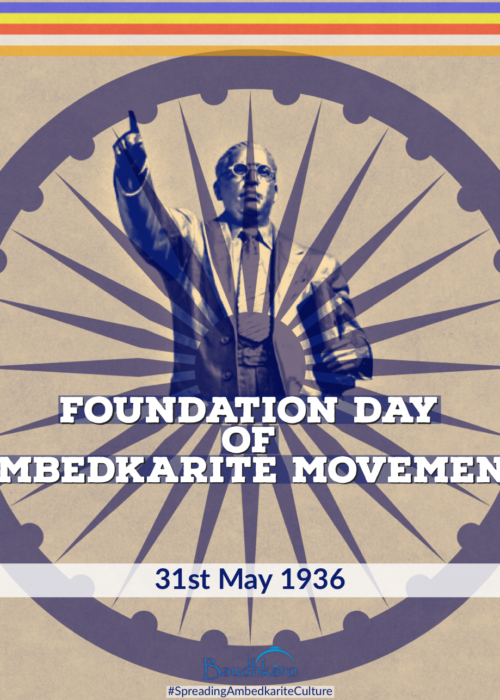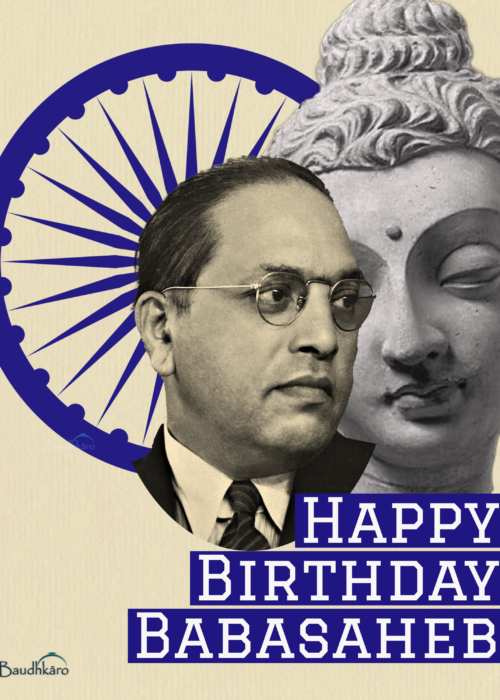BY BAUDHKAROS KRITTIKA AND VRUTTANT
(First published on JUNE 16, 2018 on PRABUDDHA COUNCIL‘s blog)
(Spoiler Alert!)
KAALA. Finally saw it!! The movie that everyone has been talking about! The revolutionary, path-breaking, inspiring, daring movie- KAALA! With so many people raving on about it and its impact, we were excited to finally watch it on the big screen- and boy, was it worth it! Pa Ranjith’s rebellious work of art exudes power in every frame. It is commendable that he has dared to use Ambedkarite symbols on the big screen- a feat not very often seen in the Indian film industry. And he deserves unending applause for it. Barring a few flaws in the script, his direction and storytelling, and his team’s brilliant, cinematography, art direction and music deserve compliments! Kaala successfully takes us to the Dharavi chawls which, like any other chawl in Mumbai, is in a constant tussle with the government regarding relocation. He raises the pertinent questions of land- who owns it, who decides for it, who lives on it? His film left us feeling energetic and charged, proud and powerful, disillusioned and… disappointed.
Kaala is not about Rajni, it’s not about Dhanush, it’s not about caste, it’s not about Ambedkar, it’s only about- Power! He who has the power will rule the people- be it the tiger of the day or the panther of the night. Power sells, and Kaala sells it well. With a hint of sensation thrown in, Kaala gives us what the market asks wants- Rise in Rage! Superstar hero? Tick. Powerful villain? Tick. Damsel in distress? Tick. Inspired by true events? Tick. Communal icons? Tick. Inspiring realism? Cross! Kaala oscillates like a heavy pendulum between showing ground reality of the marginalised and the projection of utopian ideas of revolution. It uses the same formula that has been quintessentially identified with the oppressed- Anger. It equates the lower caste with unending struggle- a romantic notion befitting the theme of the movie. It shows how the ignition of a spark in a small community spreads like wild-fire to the Bahujans everywhere resulting in nation-wide strikes. But does that really happen?
Kaala’s revolution can be compared to the very real life example of Una. The lower caste workers refused to clean carcass from upper caste homes. Protests erupted. The nation was shaken. And a party-worker was made a hero. Did the elite strike? No. Did the government fall? No. Did the upper-castes spend tireless nights living in fear of the marginalised? Hell, No! Then why does all this become inspiring when shown on the big screen? Why do people stop distinguishing between a good movie and a great one? Why are Ambedkarites going gaga over means which are far from Ambedkar’s chosen path? From the means shown by Periyar, the Phules, Siddhartha and many such great Buddhas? The problem is not the film; the problem is with the fans.

Kaala does not shy away, even for a moment, from the fact that it promotes ‘Jai Bhim Lal Salaam’. Its blatant use of the colour red and the icons of Marxism very clearly indicate the theme of the movie- Power is with the Proletariat. Along with the heavy dose of protests and discontent, it uses icons that identify with the marginalised community. A notable feat considering the huge amount of courage it takes to do so! But in spite of this, Kaala propagates the politics of ‘Jai Bhim Lal Salaam’ by using Ambedkarite symbols and terminologies without really putting them to use; Using the idols but not following their Buddhist methods of emancipation form suffering, and instead opting for Marxist means of revolution. For example, what was the purpose of the Buddha Vihara in the movie? For an Ambekarite, a Buddha Vihar is the place of learning. Not just a place of worship, it is a place where one learns the principles of Buddhism and the Ambedkarite movement. In Kaala, the Buddha Vihara is merely a prop. A place outside of which people congregate to start the revolution. That is not Ambedkarite Vihara. An Ambedkarite revolution starts from inside the Vihara. An Ambedkarite Vihara is more of a public library, where people take the first step towards the movement- Educate!
Kaala’s ideas do, though, seem to be affected by the Buddha Vihara when he takes heed from the Panchasheel, and presents alcohol to be a poor marker of judgement. Kaala’s friend, an alcoholic, states that drinking is a part of our culture. Sadly, many people associate it with the depressed classes because alcoholism is a real, thriving problem. Kaala needs to be commended in that Kaala himself blames it for his mishaps and then prevents his friend from drinking while working in the movement to prevent impairment. So, Kaala does have a good dose of Ambedkarite ideals like its affinity for Liberty, Equality and Fraternity, but they are not realised in an Ambedkarite method of acquiring Justice. The crux of the movie lies in the issue of land, but it is depicted again, in a more Socialist manner. Ambedkar warned us against staying in the village and asked us to move to the city to embrace modernism. In Kaala, there is a staunch opposition of this, wherein Kaala wholly endorses the ghettoization of the community, in spite of achieving good education and employment. He repeatedly brings up the issue of the ownership of land as it is a Socialist indicator of Power.
Kaala had very blatant references to ‘Lal Salaam’, and the denial of Ambedkarite methods to achieve Justice. Then why did activists and leaders who call themselves as anti-Jai Bhim Lal Salaam make such a huge deal about Kaala? Did they overlook its Redness? Doesn’t Kaala then, become an invitation for deeper introspection into the snare of sentimentalising the Ambedkarite movement? Although many Ambedkarites hold that communism is NOT the way, they somehow seem to drown in sentiments when it comes to caste assertion. It is often seen that when upper caste members appropriate Ambedkar, Buddha, Chakra and any of such numerous Ambedkarite symbols, Ambedkarite activists are often sceptical. And they should be! But when the same is done by a member of Bahujan community, Ambedkarites do not use caution and jump into the frenzy of tagging them as Ambedkarite.
Kaala’s romanticization of protests, rage, poverty, violence etc. which are borrowed from Socialist fads, are all primarily anti-Buddhist. Moreover, Buddhism/Ambedkarism, instead of romanticizing them, realistically perceives these issues and finds the solution by the means of Samata. The Ambedkarite movement is both material and spiritual. Ambedkar emphasised on a method that is as much moral as it is political, as social as individual, and as revolutionary as compassionate. It cannot be only for political or electoral gains- a tendency that gets propagated time and again wherein people seem to put identity before politics and sentiments before principles. Those who shun ‘Jai Bhim Lal Salaam’ must accept Bhimin his entirety, with his views on religion, morality, legality, politics et al. Ambedkarites must realise that transformative agency lies not merely in sensational symbolism, but in practicing the method given by Ambedkar.
Jai Bhim!





Very informative to spread ambedkarite culture